
Ho Chi Minh City: Retracing history and French art
Latest
| TIN LIÊN QUAN | |
| Air New Zealand launches HCM City - NZ flight | |
| Third int’l Denims & Jeans exhibition underway in HCM City | |
This was my second visit to Ho Chi Minh City and my ride to the hotel in District 1 to the Ho Huan Nghiep Street helped me recollect all that I had experienced a couple of years back. The roads were still motorcycle-choked; the fumes from the street food joints appeared even more delectable, while, in the narrow lanes, traditionally dressed men and women selling flowers and souvenirs, had the same charm in their smile. Undoubtedly, in a country that can be remembered for its hospitable people, Ho Chi Minh City serves a perfect getaway for Indian travellers interested in the history of this otherwise timid country.
However, what looked distinctively different is the fast urbanisation of the country and the city in particular. From what I could recall from my trip in 2015, there has been a massive makeover of the city. New hotels, bars, art galleries and restaurants have sprung up in all possible corners of the city. Some of the under construction sites look promising despite adding a visual distraction at times. The city is still noisy but what has remained almost similar is the intent of the Vietnamese people to retain their culture in terms of the way they dress, the gestures and most importantly their innocent smile.
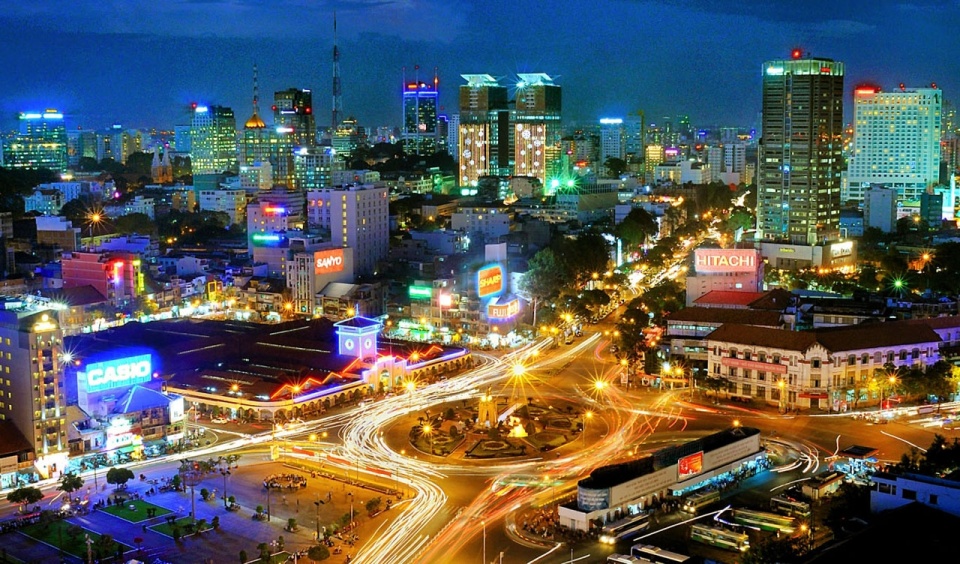 |
| Ho Chi Minh City centre. (Photo: Brands Vietnam) |
Floyd Cowan, a fellow journalist based in Singapore who has been visiting Ho Chi Minh City for the last 17 years said, "We have seen a lot of changes over the years. The city has come from quite a small backward place to a thriving city now. It is perhaps the entrepreneurial skill of the people and the areas that we never visited in our earlier trips are now vibrant communities. I think Vietnam and especially Ho Chi Minh City has a lot to offer the world as a tourist destination. They just need to let the world know; how good the food is, how beautiful the country is and then they will really have a lot more tourists from all over the world."
Saigon: Soaked in History
In the early part of the last century, Saigon was the biggest urban centre and power base in the Indo-China region, perhaps, even the entire East Asia, barring Tokyo. And, about a century later, as I went around the city, many of the best attractions in Saigon I was revisiting were still centred on the events of 20th century war and conquest. The city is a perfect reflection of all the settlements and cultural exchanges that left an impression. The Spanish and French-styled buildings, the bustling Chinese population in the China town along with the traditional Prey Nokor (erstwhile name of Saigon) fishing village fused to become what we see today. It sounds sombre, and in parts it is, but there are some truly fascinating historical anecdotes that would hook travellers of all ages. From classic French architecture to perfectly maintained American war planes, walking around older parts of Ho Chi Minh City is like seeing the past come to life with so many famous places of interest scattered throughout the city. Of course, as Vietnam’s biggest city and business capital, things are changing and modern skyscrapers are starting to punctuate the sky combining the new and old in a uniquely Vietnamese way.
Starting with the Notre Dame Cathedral built by the French colonists in the 1880s, I would like to mention a few more experiences for an Indian traveller in Vietnam. Vietnam is more of a Buddhist nation and the remains of the small Catholic community in Saigon along with its French connection are beautifully portrayed in this structure in the French Square in District 1. With a statue of the Virgin Mary in front of the Cathedral and the picturesque sky in the backdrop of the Redstone building, this is one of the must-visit places for beautiful photographs before a sultry evening walk. The cathedral allows visitors from 0800 hours to 1700 hours every day.
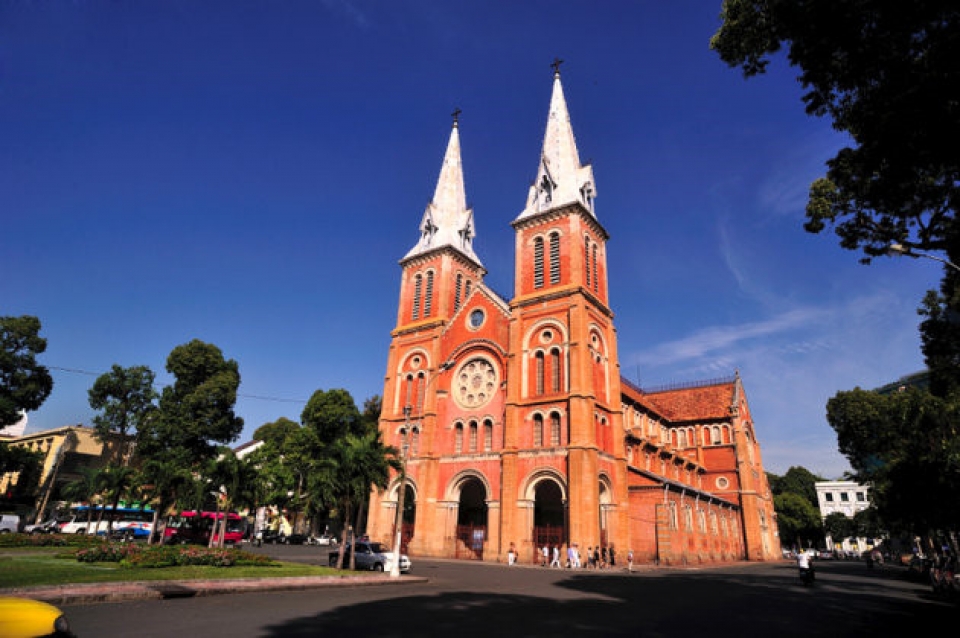 |
| Sai Gon Notre Dame Cathedral. (Photo: Zing) |
The Central Post Office in Ho Chi Minh City is yet another splendid instance of French colonial architecture. The city’s department of tourism has perfectly preserved it with almost the same charisma as its first opening in 1891. The building still functions as the city’s main post office and sending a letter or postcard home is highly recommended for experiencing history in its rarest form. The building is another place to pose for a photograph as its beauty from any angle can mesmerise visitors from all over the world. Ton, our tour guide, told us that the building was designed by Gustave Eiffel, whose most famous creation is the iconic Eiffel Tower in Paris. The post office located in Cong Xa Paris Street in District 1 opens from 07:00 hours daily and remains open till 19:00 hours.
On our way to the History Museum, Ton described the importance of this museum, “This is one museum that will give you a clear idea of the Vietnamese tradition, culture, history and the evolution of the country amidst various colonial settlement and its glorious rise after the war. Although the War Remnants Museum is more apt a museum which details the effects of the 30-year-long war between America and Vietnam, this museum delves deeper in the history.” This museum is amazing but it is advised to be here with some time to spare. The artefacts, mummified woman, the carvings and statues along with the small notes inscribed on each of the exhibited statues, pictures or models are an outstanding display of the history of this country. The History Museum is also in District 1 on the Nguyen Binh Khiem Street.
I headed to the China Town of Saigon after a quick lunch at the Binh Tay Market in District 6. This local market was constructed by the French in the 1880s and is located in the centre of Vietnam’s largest Chinatown district. Unlike Ben Thanh Market in District 1, this market mainly serves the local population with its extensive range of fresh fruits, vegetables, poultry, meat and seafood from regions across Vietnam. But it also has some of the best local food joints where once can enjoy a sumptuous traditional Vietnamese meal.
The China Town is also home to some of the most beautiful pagodas such as the Tran Hung Dao Temple, built in 1932 in the honour of Tran Hung Dao, a national hero, or the Thien Hau Temple (Lady of the Sea). The looping incense sticks hanging from the ceiling is an interesting thing to experience in these pagodas apart from the traditional Chinese architecture.
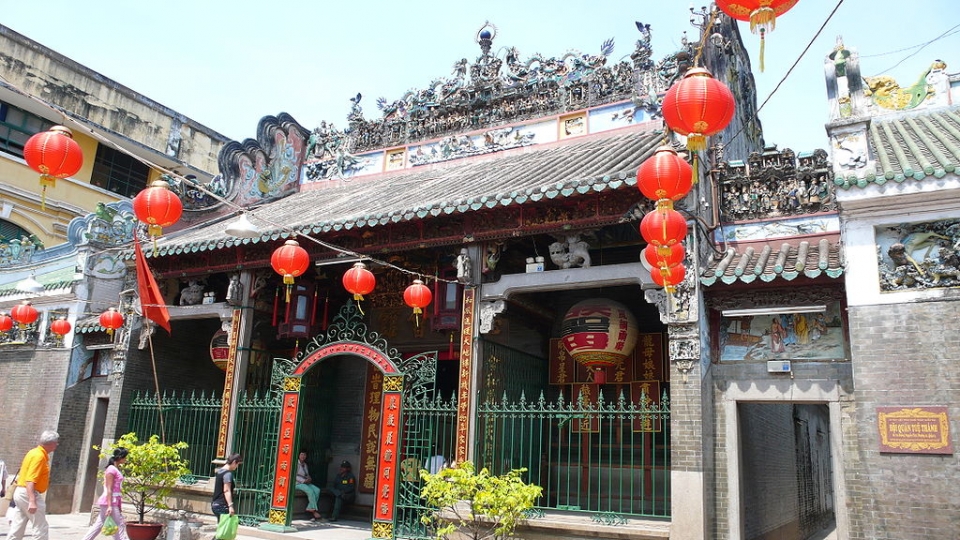 |
| Thien Hau Temple. |
Some of the noted buildings in and around Saigon are the Independence Palace in District 1 that is recognised as the National Relic in 2009 as a commemoration of the end of war against the Americans, the Ho Chi Minh City People's Committee and the Saigon Opera are worth mentioning. The last two signify Vietnam's French connection quite vividly in terms of the architecture. The statue of President Ho Chi Minh in front of the administrative house of the city at the Walking Street Square is another place to capture your Vietnam memories in the form of photographs and videos.
“The population of Ho Chi Minh City is around 10 million and the number of motorbikes on the roads of the city is approximately 8 million,” Ton smiled as he told us some of the funniest facts of his city. However, the city won’t fail to charm you by the sheer warmth of its people. The vegetarians might find it a little tricky to find good local food but an early reminder to your tour guide will alleviate such minor issues.
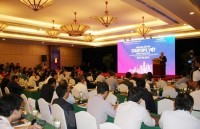 | Forum connects Vietnamese startups at home and abroad The forum “Connecting Vietnamese startups at home and abroad” was kicked off in Ho Chi Minh City on June 26, bringing together about 400 startup ... |
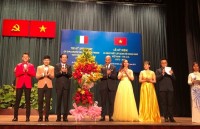 | Vietnam-Italy diplomatic ties marked in HCM City Mutual trust, determination, and joint efforts will make the strategic partnership between Vietnam and Italy and the cooperative ties between Ho Chi Minh City and ... |
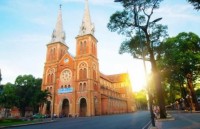 | Ho Chi Minh City to host Asian-Pacific cities’ tourism promotion forum The 8th Tourism Promotion Organization for Asian-Pacific Cities (TPO) Forum will take place in Ho Chi Minh City on June 21-22, said the municipal Department of ... |

















